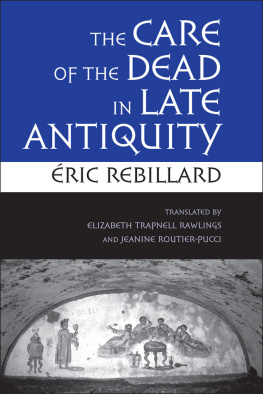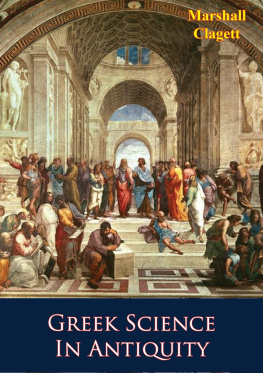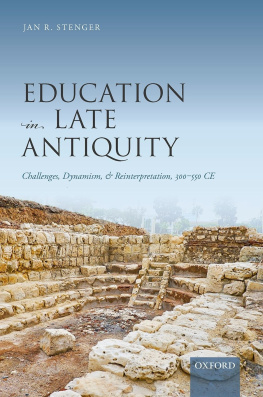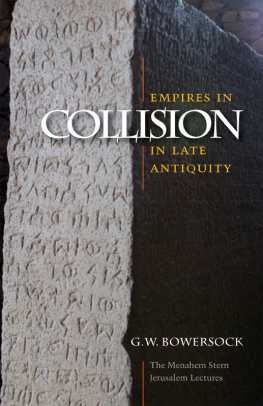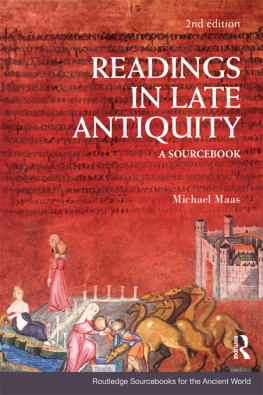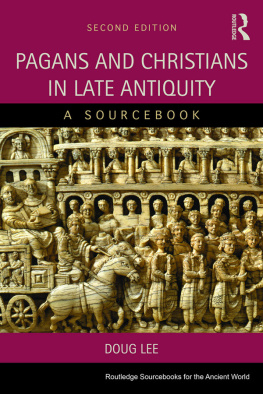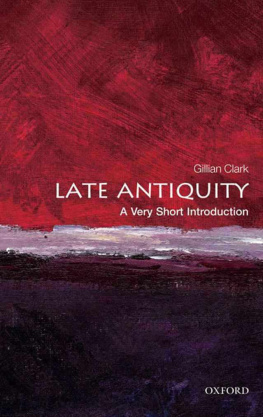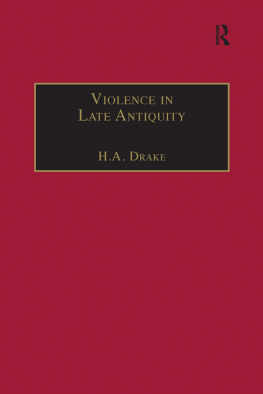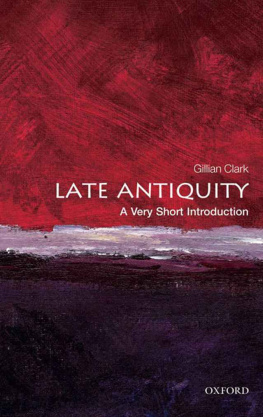Rebillard - The Care of the Dead in Late Antiquity
Here you can read online Rebillard - The Care of the Dead in Late Antiquity full text of the book (entire story) in english for free. Download pdf and epub, get meaning, cover and reviews about this ebook. publisher: Cornell University Press, genre: Religion. Description of the work, (preface) as well as reviews are available. Best literature library LitArk.com created for fans of good reading and offers a wide selection of genres:
Romance novel
Science fiction
Adventure
Detective
Science
History
Home and family
Prose
Art
Politics
Computer
Non-fiction
Religion
Business
Children
Humor
Choose a favorite category and find really read worthwhile books. Enjoy immersion in the world of imagination, feel the emotions of the characters or learn something new for yourself, make an fascinating discovery.
The Care of the Dead in Late Antiquity: summary, description and annotation
We offer to read an annotation, description, summary or preface (depends on what the author of the book "The Care of the Dead in Late Antiquity" wrote himself). If you haven't found the necessary information about the book — write in the comments, we will try to find it.
The Care of the Dead in Late Antiquity — read online for free the complete book (whole text) full work
Below is the text of the book, divided by pages. System saving the place of the last page read, allows you to conveniently read the book "The Care of the Dead in Late Antiquity" online for free, without having to search again every time where you left off. Put a bookmark, and you can go to the page where you finished reading at any time.
Font size:
Interval:
Bookmark:
 CHAPTER 1
CHAPTER 1
Textbooks on church history or Christian archaeology all contain accounts of the organization of cemeteries by the first Christian communities at Rome and Carthage at the end of the second century. As I have stated in the introduction, the question is actually far from being as simple as one might think from reading the textbooks. In this brief chapter I wish to point out that the question of the origins is now facing an impasse, and thus pave the way for an approach that will take a radically different point of view. The basic account for the organization of the Catacombs of Rome was developed by Giovanni Battista De Rossi (182294) and has changed very little since; the case of the areae of Carthage has been recently revisited, but also without any significant change. As we shall see, these two aspects of the dossier of the origins together present an excellent example of the philologico-combinatory method criticized by Arsenio Frugoni in the following terms: as though dealing with perfect pieces in a mosaic, statementsthat is, attested factshave been connected with utmost confidence to Providence, always so well-disposed to the endeavors of historians.
 Was the Catacomb of Callixtus the First Cemetery of the Roman Church?
Was the Catacomb of Callixtus the First Cemetery of the Roman Church?De Rossis report on the organization of cemeteries of the Roman Church before Constantine is a consummate example of the art of establishing connections. Indeed, De Rossi strove to make the data he drew from texts fit the archaeological monuments. The central piece of his reconstruction was a recently discovered text that he describes as a revelation on the Roman Church: the Refutation of All Heresies. From this comes the hypothesis that Christians legally organized their communities in the empire on the basis of laws on associations, and De Rossi concludes by presenting Callixtus as the head of a legally registered funerary collegium entitled to possess, corporately, a cemetery.
It was, therefore, at the end of the second century that the Roman Church established its first communal cemetery, at the very time when Tertullian, in describing pagans attacking them, would indirectly attest to the existence of such cemeteries in Carthage. The effect of Gallienuss edict is then confirmed by the passage in the LiberPontificalis (26.2) concerning Dionysius (bishop of Rome from 259 to 268), who is credited with a system of distributing the cemeteries according to the different parishes.
One might add here and there one or two supplemental pieces to the skillful puzzle put together by De Rossi, but this is the basic material: from the birth of the first cemetery of the Christian community in Rome to the creation of parish cemeteries once the church actually possessed an administration.
The thread that runs through all the elements so skillfully combined by De Rossi is the word cemetery in its Greek or Latin form; hence, this is where means a place to sleep.
The earliest uses of the word in a funerary context date from the end of the second century of the common era, when Christians appropriated the word with a specific meaning, a usage easily justified by the scriptural imagery of the sleep of death as sleep preceding resurrection.
The traditional hypothesis about the evolution of the meaning from an individual tomb into a place of communal burial has been quite rightly dismissed by Antonio Ferrua, who prefers to consider regional variations and therefore the coexistence of the two meanings. However, all the texts in which he thinks that koimeterion was used in the sense of a communal burial site are closely related to the specific context of the cult of martyrs. And indeed, with respect to the martyr cult, the word has had a more specific usage designating not so much a place of communal burial as the martyrs tombs, and also the place where they were located.
In Latin, coemeterium has thus been used to refer to the churches located in the Roman suburbium. They were erected in honor of the martyrs and might have held burials. In the sixth century, the Liber Pontificalis very clearly attests to this usage in the entry on Julius I (bishop of Rome from 7 to 52) that calls cymeteria buildings designated as basilicae in its source, the LiberianCatalog, compiled under Liberius (bishop of Rome from 52 to 66).
Corresponding to this well-known, specialized use of the Latin word in relation to martyrs, there is a similar use of the Greek word that has not been studied. There is never any question in these texts of forbidding burial; the interdiction only referred to the cult gatherings around the tombs of the martyrs. The word koimeterion, in both the singular and plural, does not designate a place of communal burial but a martyrs tomb, or a group of them and, by extension, the place of the cult that developed around them.
While serving as a priest in Antioch (8698), John Chrysostom devoted the introduction of a Good Friday sermon to explaining why the place where the church of Antioch celebrates the crucifixion is called the koimeterion:
Why do we gather in this martyrium and not in another? Indeed, by the grace of God, our city is surrounded on all sides by a shield of saintly relics. So why do our Fathers desire us to assemble here, and not in another martyrium? Because it is here that so many of the dead are lying. And as this is the day when Jesus descended among the dead, we gather here. And this is why this place is called koimeterion: in order that we should know that the dead, while they may lie here, are not dead, but are asleep and at rest.
Context shows that the name koimeterion is given to the place of the martyrium where the crucifixion is celebrated, and to no other places. From additional evidence we know that this was the martyrium of Daphne. The appellation by antonomasia can only be understood if the word usually signifies a tomb: the martyrium of Daphne becomes the tomb par excellence, that of the martyrs. In the middle of the fourth century, for the Christians of Antioch, it is clear that the word koimeterion does not mean cemetery.
The note on Callixtus, the starting point of De Rossis entire argument, thus seems to stand singularly alone, particularly inasmuch as several other texts, especially the imperial edicts that use the word koimeterion, have lost their relevance.
 Were the Cartaginian Areae Christian Cemeteries, or Burial Enclosures for Christians?
Were the Cartaginian Areae Christian Cemeteries, or Burial Enclosures for Christians?This is also true of the dossier of the areae in Carthage.
The starting point for this case study is a passage from To Scapula, an open letter addressed in 212 to Scapula, proconsul of Africa, by Tertullian to protest measures of persecution. Tertullian warned the persecutor of divine vengeance and evoked, as an example, the episode of 202, when the Carthaginians attacked Christians, violating their tombs: This is what happened, for example, when Hilarianus was governor: While people were complaining about the ground where our graves were located: shouting No grounds for them! it was actually they who lost their grounds: indeed, they did not harvest their grain (To Scapula 3.1). Tertullian wanted to provide a graphic example of divine vengeance against the pagans persecution of Christians. He had two true facts, or two facts that had at least to be accepted as true if he were to be convincing: the pagans outrages against the Christian tombs, and the famine that resulted from the lack of harvest. Thus he joins two uses of the word
Next pageFont size:
Interval:
Bookmark:
Similar books «The Care of the Dead in Late Antiquity»
Look at similar books to The Care of the Dead in Late Antiquity. We have selected literature similar in name and meaning in the hope of providing readers with more options to find new, interesting, not yet read works.
Discussion, reviews of the book The Care of the Dead in Late Antiquity and just readers' own opinions. Leave your comments, write what you think about the work, its meaning or the main characters. Specify what exactly you liked and what you didn't like, and why you think so.

